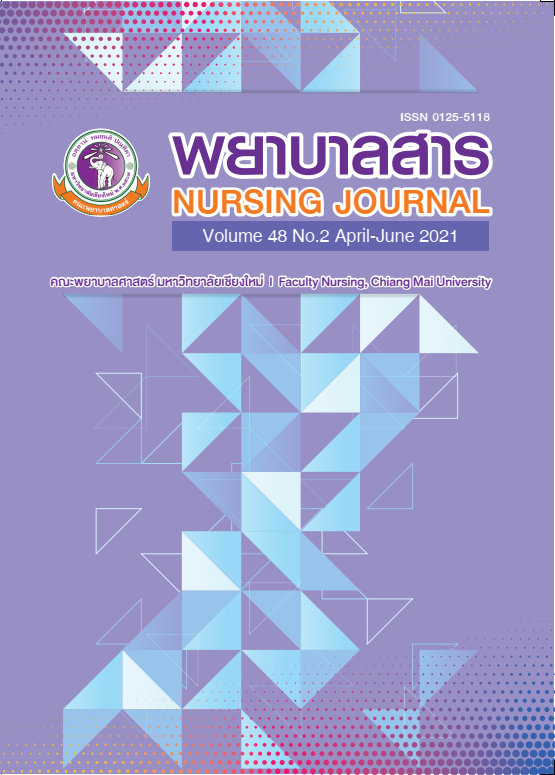The Relationship Between Personal Factors, Psychosocial Factors, and Environmental Factors Among Repeated Methamphetamine Recurrence in Thanyarak Hospital
Keywords:
Personal factors, Psychosocial factors, Environmental factors, Methamphetamine recurrenceAbstract
This research is descriptive research. The purpose for the relationship between personal factors Psychosocial and Environmental Factors Associated with Methamphetamine Re-use. Using the Pearson Correlation Coefficient Test, data were collected from November 2019 to July 2020 for a total of 9 months. The population of the study was 227 people. The instruments used for data collection were 1) general information questionnaire, divided into 2 parts: part 1, personal information questionnaire, and part 2 questionnaire. About the recurrence factor of methamphetamine The tool has been tested for content validity by a qualified person. The accuracy index was 0.80, the data was analyzed by descriptive statistics and the relationship was analyzed by the Pearson correlation coefficient.
The results showed that drug treatment recipients of Thanyarak Hospital. They returned to use amphetamine 1-2 times, the most (45.80%), followed by 3-4 times (36.60%), most of which were male (74.40%) than female (25.60%) was the age of 21-30 years, the most (47.10%). The correlated factors were 1) personal factors, age, religion and education had a statistically positive relationship (r = .14, r = .13, r = .13 and p <.05, respectively), comorbidities were significantly negatively related (r = - .15, p <.05) 2) psychosocial factors. Found that the main reason for the first time using the substance There was a statistically significant positive correlation (r = .13, p <.05), with the top three main causes of drug use, the first three were wanting to try, 114 people (50.20%), secondary. There were 76 friends (33.50%) and 15 people (6.60%) of fun, respectively. 3) Environmental factors for relapse of methamphetamine, it was found that the characteristics of the community where you live There were statistically significant positive correlations with risk factors for methamphetamine recurrence among drug treatment recipients (r = .14, p <.05). The top three were rural communities with 120 people (52.80%), followed by urban communities with 49 (21.60%) and suburbs with 35 people (15.40 percent), respectively. Based on the results of this study, the multidisciplinary team was able to use the results of the study to develop a therapeutic program that could help reduce the three risk factors that cause recurrence of therapy in patients. The government and all relevant sectors should support early risk prevention and mitigation policies in youth groups. Encourage a good family Ensuring good environment in the community to be safe All of this will be essential to reducing risk factors since childhood as a shield against all types of drug abuse.
References
Seeherunwong, A., & Yuttatri, P.(2013). Associated factors of illegal drug abuse and dependence
behaviors among defenders under compulsory drug treatment system. Journal of
Psychiatric Association of Thailand, 58(4), 371-384. (in Thai)
Department of Mental Health. (2016). Amphetamine. Retrieved from https://www.dmh.go.th/news/view.asp?id=1214 (in Thai).
Gottfredson, Michael R., & Travis H. (1990). A General Theory of Crime. Stanford: Stanford University Press.
Meena, N., & Suthakorn, W. (2018). The effectiveness of the life skill promoting program and family participation on life skills development and intention to quit using illicit drug among juvenile under supervision by the venue of youth observation and protection. Nursing Journal, 45(2), 88-98. (in Thai)
Chunchuayjaroen, N., & Supwirapakorn, W. (2016). the effects of Gestalt group counseling on delaying gratification of juvenile recidivists. Journal of the Police Nurses, 8(2), 58-72. (in Thai)
Udomvong, N.,Juntasopeepun, P.,Lasuka, D.,Sucamvang,K., Yaprasert,W.,Yaprasert,S.,...,& Karnjanasawitre,C. (2015). Knowledge Management on Mobilizing Effective Participatory HealthyPublic Policy : Chompoo Sub-district Saraphi distric Chiang Mai Province. Nursing Journal, 42(1), 97-107. (in Thai).
Thanyathanakul,S.(2010). Adolescence and drugs. Journal of Education Naresuan, 12(3), 168-173. (in Thai)
Sirinual, S.,Suphunnakul, P.,Noosorn,N.,& Wongsawad,P. (2016). Factors affecting amphetamine relapse among drug addicts after treatment. Journal of Health Science Research, 10(1), 39-45. (in Thai)
Office of the Narcotics Control Board. (2018). Narcotics prevention in the community. (in Thai).Retrieved from https://media.oncb.go.th/index.php/th/23-2018-02-20-07-04-07/2018-02-20-07-05-01/46-content3-04
United Nations Office on Drugs and Crime. [UNODC]. (2017). World Drug Report 2017: 29.5 million people globally suffer from drug use disorders, opioids the most harmful. Retrieved from https://www.unodc.org/wdr2017/
Downloads
Published
How to Cite
Issue
Section
License
บทความที่ได้รับการตีพิมพ์เป็นลิขสิทธิ์ของวารสารพยาบาลสาร
ข้อความที่ปรากฏในบทความแต่ละเรื่องในวารสารวิชาการเล่มนี้เป็นความคิดเห็นส่วนตัวของผู้เขียนแต่ละท่านไม่เกี่ยวข้องกับมหาวิทยาลัยเชียงใหม่ และคณาจารย์ท่านอื่นๆในมหาวิทยาลัยฯ แต่อย่างใด ความรับผิดชอบองค์ประกอบทั้งหมดของบทความแต่ละเรื่องเป็นของผู้เขียนแต่ละท่าน หากมีความผิดพลาดใด ๆ ผู้เขียนแต่ละท่านจะรับผิดชอบบทความของตนเองแต่ผู้เดียว





